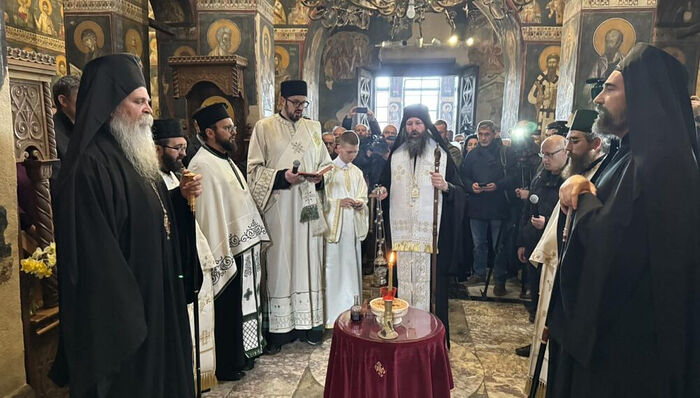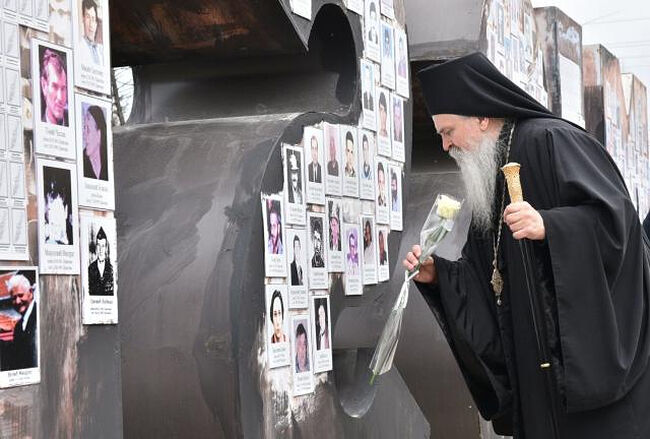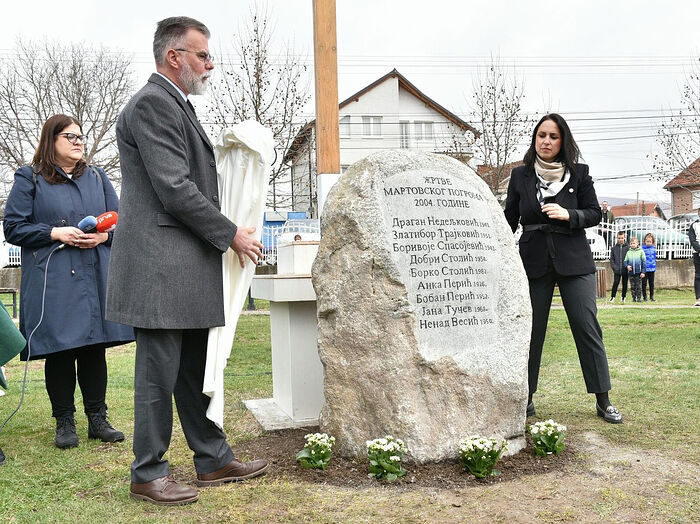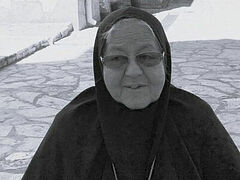Gračanica, Pristina District, Kosovo, March 20, 2024
The Serbian Orthodox Gračanica Monastery solemnly commemorated on Sunday the 20th anniversary of a tragic event in Kosovo that left at least 14 dead and hundreds wounded.
The memorial service for the victims of the March Pogrom (March 17-18, 2004) was celebrated by His Grace Bishop Ilarion of Novo Brdo, with Their Graces Bishops Metodiije of Budimlja and Nikšić from Montenego and Teodosije of Raška and Prizren in attendance, reports the Serbian Orthodox Diocese of Raška and Prizren.
The service was also attended by numerous faithful and representatives of the Serbian government’s Office for Kosovo and Metohija Affairs.
Bp. Ilarion spoke of those who were murdered 20 years ago:
Zlatibor was murdered by rioters in front of his family, his wife. In Gnjilane, Boban was martyred, followed by the death of his mother. In Mitrovica, Jana and Borivoje. In the village of Drajkovce, a father and son. Nenad perished in Lipljan. We must always be aware that the path we are on is one of endeavor, a path of suffering at various levels.
After the memorial, participants went to the Gračanica Cultural Center, where they laid white flowers at the Missing monument in memory of the victims of the pogrom. Then a new monument to the victims by sculptor Branislav Ristić was unveiled in the yard of the cultural center.
In a speech at the cultural center, Bp. Teodosije emphasized that the 2004 pogrom “remains deeply etched in the Serbian collective memory as one of the saddest moments of our recent history.”
“Over those two days, our churches and monasteries, which had survived various wars and calamities for centuries, were ablaze. News of atrocities committed against our innocent people and clergy came from all sides; thus, we commemorate this anniversary by holding a memorial service and offering prayers to the Lord,” His Grace said.
***
In Serbia recounts:
In the wave of ethnic Albanian violence that broke out on March 17, 2004, a total of ten Serbs were killed and two went missing, and 11 Albanians died in clashes with members of international forces.
In only three days, 954 people were injured, including 143 Serbs and dozens of members of international forces who clashed with the Albanians in an attempt to protect the Serbs and their property. The attack left 72 UN vehicles damaged.
A total of 4,012 Serbs were expelled, six towns and nine villages were ethnically cleansed, and 935 Serb houses and 10 community facilities—schools, health centers, and post offices—were destroyed, burnt down or heavily damaged.
The religious and architectural heritage of the Serb people was a special target for the ethnic Albanians, resulting in 35 churches and monasteries, including 18 cultural monuments, being destroyed or burnt down.
Devič Monastery near Srbica and the dormitories of the Monastery of the Holy Archangels near Prizren were flattened; Our Lady of Ljeviš Cathedral from the 12th century and the Church of St George from the 16th century were burned down, and on the vault of the latter the ethnic Albanians wrote: Death to Serbs.
The Serb Orthodox Theological School in Prizren and the seat of the Diocese of Raška and Prizren were destroyed. Serb cemeteries were desecrated, including the marble tomb of St. Joanikije of Devič in Devič Monastery and the one of Emperor Dušan in the Monastery of the Holy Archangels.
More than 10,000 valuable frescoes, icons, chalices, vestments and other church relics, together with registries of Baptisms, marriages and deaths, which testified to a centuries-long Serb presence in the province, disappeared or were damaged.
Follow OrthoChristian on Twitter, Vkontakte, Telegram, WhatsApp, MeWe, and Gab!






